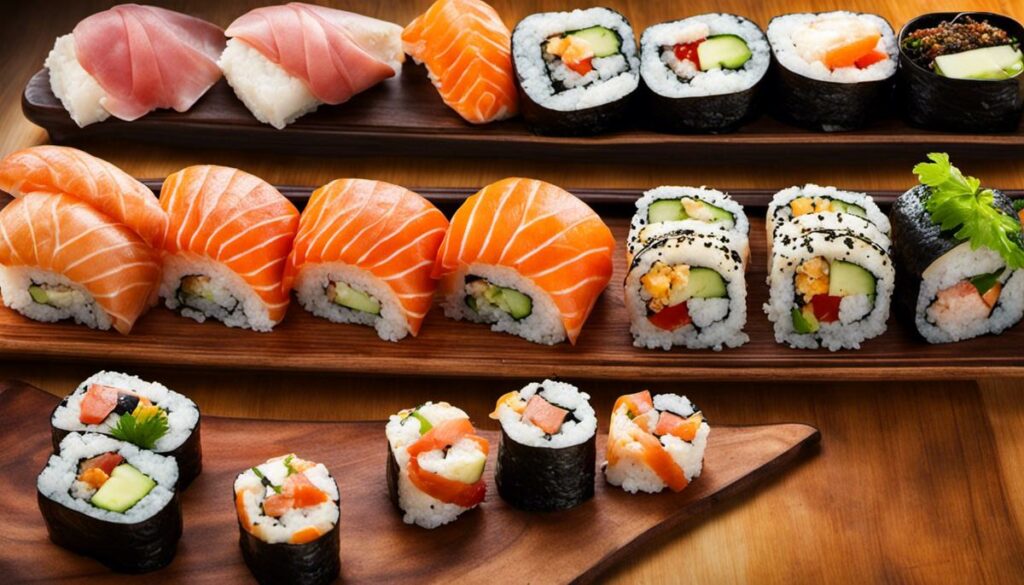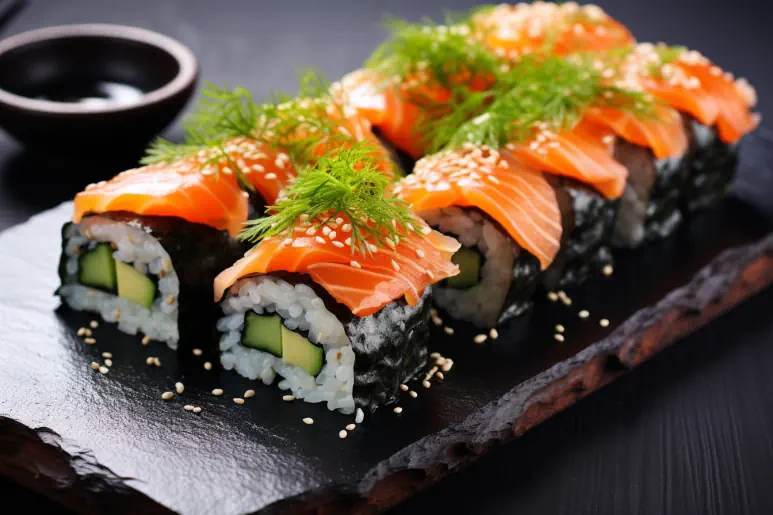The art of sushi preparation not only surpasses the aesthetic aspects of a traditional Japanese meal, but also provides valuable nutrients, especially proteins. From the elegance of a simple nigiri to the abundance of maki rolls, at the heart of every sushi roll is its ability to deliver high-quality protein in every single slice. Whether you opt for raw fish, cooked meat, or crunchy vegetables, each element in a sushi roll has its own special way of providing the body with much-needed protein. Coupled with the health benefits they bring and their role in the context of a conscious lifestyle, sushi rolls are an incomparable treat.
The variety of sushi rolls as a source of protein
The universe of sushi rolls is breathtakingly diverse, full of colors and textures, precisely chosen ingredients, and most importantly, one thing – protein. Yes, behind the seeming simplicity of the artistry and taste of sushi lies an abundance of protein options that offer both palate delight and nutrient delivery. But how does the protein content really vary in different types of sushi rolls?
Let’s start with the Makizushi roll, which is often known for its abundance of fresh, raw fish and vegetables. Probably the best-known form of Makizushi is the “California Roll“, a mixture of avocado, surimi and cucumber. With the surimi as the main protein component, a serving of “California Roll” usually contains about 9 grams of protein. Another popular Makizushi variation, the “Spicy Tuna Roll“, boasts an impressive protein content of 24 grams, thanks to tuna as its main source of protein.
Now let’s move to the nigiri. Nigiri Sushi presents its raw fish on top and proudly, which gives an immediate indication of its protein content. Salmon nigiri, for example, contains about 22 grams of protein per 150-gram serving, while a comparable serving of tuna nigiri can provide up to 26 grams of protein. Surprisingly, tamago nigiri, a sweet, rolled omelette, which was originally intended as a side dish, also provides a remarkable 20 grams of protein.
Last but not least, the tempura rolls. Tempura is a deep-fried variant that often uses seafood and vegetables. The extra deep frying naturally increases the overall calorie content, but it also provides extra protein. For example, a tempura shrimp roll can boost the protein content to an impressive 20 grams per serving.
But even though the protein content varies, one thing remains clear – sushi is a true star in the world of indulgene, protein-rich foods. With its countless variations, it offers exciting culinary experiences that are rich in protein and dance on the tongue at the same time. Thus, sushi not only stands for an excellent choice for a healthy diet, but also meets the demand for aesthetics and sophistication.
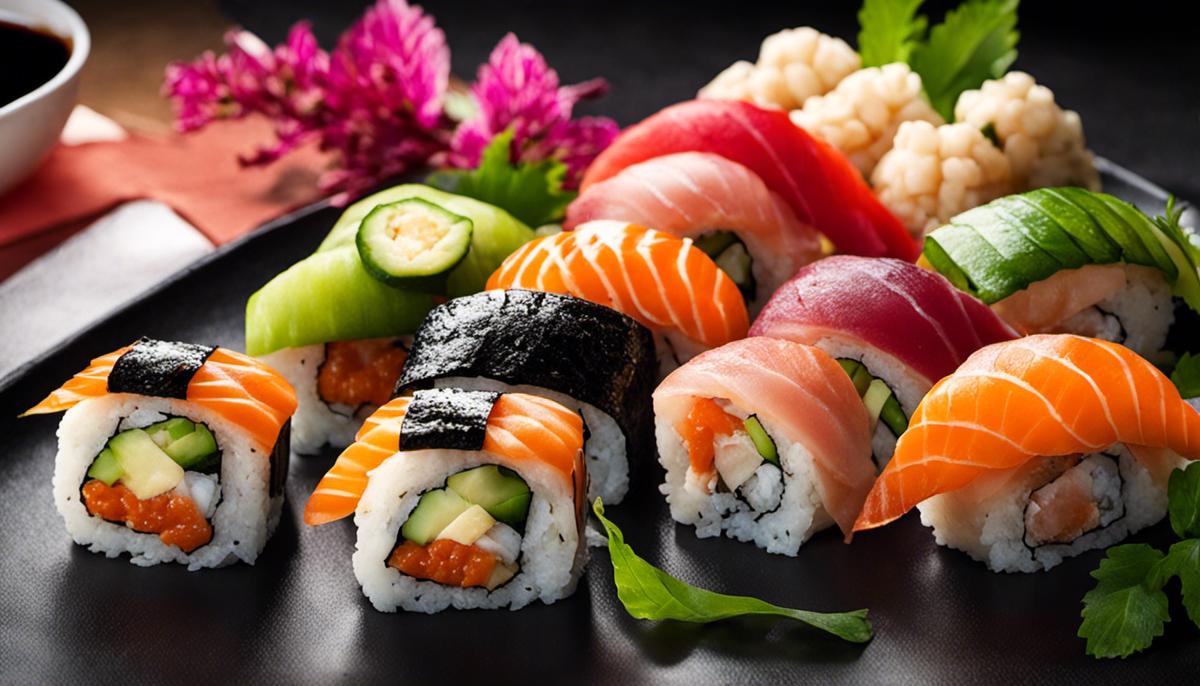
The Health Benefits of Sushi Rolls as a Source of Protein
In addition to the impressive variety and high protein content, sushi rolls also leave plenty of room for versatility on the menu. Whether it’s maki, nigiri or tempura rolls, each product allows for a tasty combination of healthy ingredients that will satisfy both the palate and the body.
One of the outstanding features of sushi rolls is their high content of omega-3 fatty acids, which are found in fatty fish such as salmon or tuna. These essential nutrients are known to improve cardiovascular function, lower cholesterol, and help prevent conditions such as arthritis. Who would have thought that dinner at your favorite sushi restaurant is not only a culinary delight, but also makes a huge contribution to health!
Sushi rolls are also an excellent source of healthy carbohydrates, thanks to the rice they contain. In this way, they ensure a steady and sustainable source of energy. Often used in sushi, the rice also provides an abundance of fiber – perfect for a balanced diet and to support healthy digestion.
The fresh ingredients used in sushi rolls are numerous and provide a wide range of vitamins and minerals. For example, seaweed, which is found in many sushi rolls, is rich in iodine, which is essential for thyroid function. Other popular ingredients such as avocado contribute healthy fats, while vegetables such as cucumber, carrot and bell pepper contribute to the variety of nutrients absorbed.
To top it off, soy sauce and wasabi, often served alongside sushi, promote overall health and well-being. Soy sauce contains antioxidants and is a good source of protein, while wasabi has antibacterial properties and helps boost the immune system.
So, high-quality sushi rolls offer much more than just excellent taste. They are a source of essential nutrients that can contribute to overall health and well-being. They combine aesthetics and sophistication with nutritious ingredients, all combined in one delicious reel. Rest assured – you’re doing something good for your body while enjoying this fascinating Japanese dish. So it’s clear that sushi is far more than just a stylish dining option – it’s a nutritious, healthy, and sensual experience that lives up to any hype.
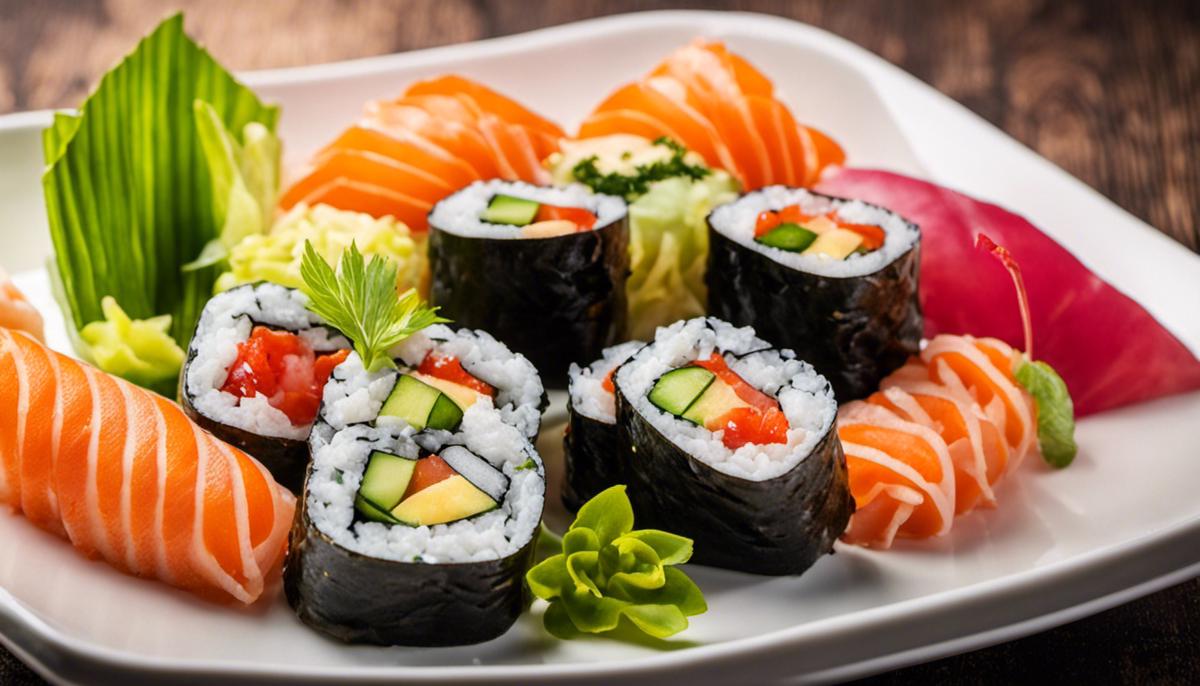
The Enjoyment of Sushi Rolls in a Lifestyle Context
Continued from the article:
The versatility of sushi rolls
Without question, sushi is a flexible and versatile dish that can be easily adapted to personal tastes and dietary needs. Vegan sushi? No problem! Free of gluten or lactose? It’s as simple as that! In no other cuisine is it so easy to switch between proteins, fish, meat and vegetables without compromising the aesthetics of the entire dish.
The use of local and seasonal ingredients
Maintaining a conscious lifestyle also means paying attention to the origin of ingredients and promoting local products. Sushi can be made with local and seasonal ingredients, which not only improves the flavor but also reduces the impact on the environment.
Packaging with aesthetics
The presentation plays a major role in the enjoyment experience of sushi. The meticulous design of the bento boxes in which sushi rolls are served, the aesthetic arrangement and the use of edible decorations is a real feast for the eyes and reflects the refined and conscious lifestyle that sushi lovers appreciate.
Learning the art of sushi making
Preparing sushi is an art that requires tactical skill and patience. Workshops and courses are a wonderful way to learn these skills and put the knowledge of the culture into practice. At the same time, it is a creative act of self-love and self-sufficiency.
The Social Aspect of Sushi
Sushi is much more than just a dish. It has become a global culture with international sushi festivals, competitions and networking events for you to enjoy and experience.
Result
Whether for health, aesthetic or ethical reasons – sushi is much more than a simple culinary delight. The impact of sushi on lifestyle is remarkable – and gets even greater the more we engage with and appreciate it. In this way, sushi helps to embody a conscious and refined philosophy of life. It shows how aesthetics, enjoyment and a healthy lifestyle can go perfectly hand in hand.
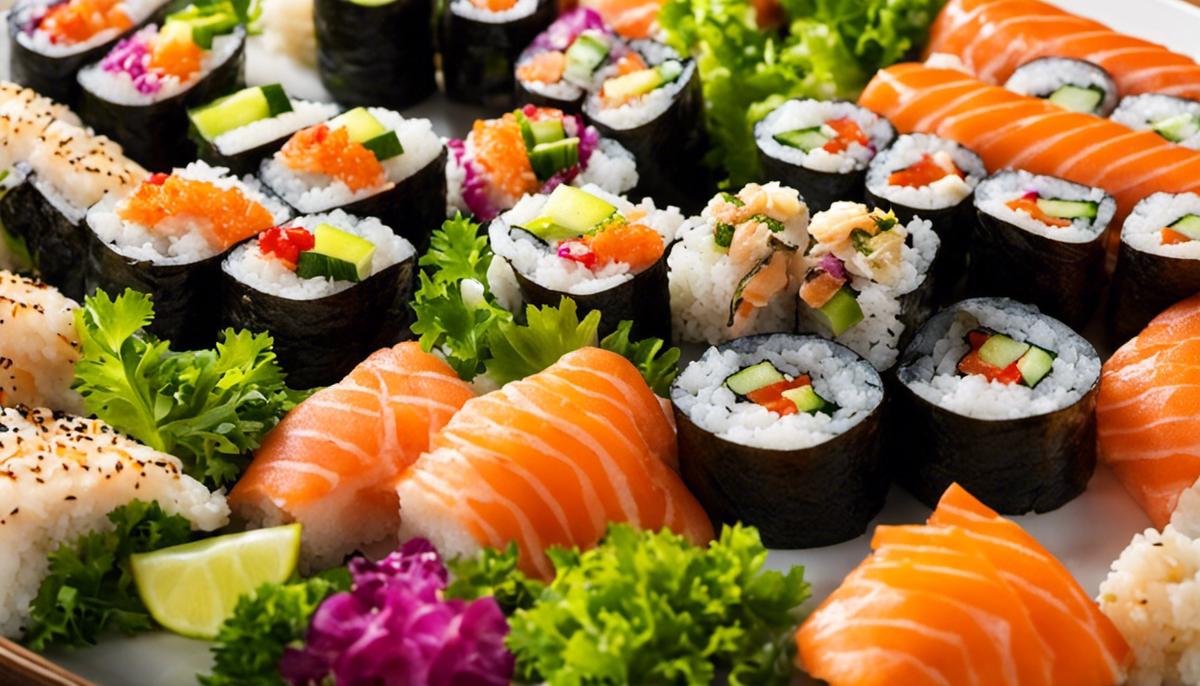
How to make sushi rolls at home
Sushi rolls are remarkably adaptable and flexible, resulting in them being a source of endless creativity in the kitchen.
Starting from the classic recipes, they can easily be spiced up with a variety of protein-rich ingredients such as chicken, beef, tuna or salmon. Experienced chefs even expand their culinary horizons by using cold cuts, grilled vegetables or exotic fruits. The possibilities are truly endless!
The use of local and seasonal ingredients can significantly improve the quality and freshness of the sushi rolls produced. For a maximum heartwarming experience, the use of organic and environmentally friendly vegetables, fruits and meat is advisable. When choosing ingredients, one should always pay attention to sustainability and consider all possibilities to support the pioneering work of farmers and fishermen.
A perfectly made sushi roll should not only be tasteful, but also aesthetically pleasing. In the art of sushi making, the packaging is just as important as the contents. The colours of the ingredients, the carefully applied layers and the precise roll all speak to the dedication and enthusiasm that goes into the preparation.
Even learning the art of sushi making can be an enriching experience. Sushi making classes are a great way to learn a new skill that is both delicious and healthy. In addition, it’s a fun way to spend time with friends or maybe even go on a date.
Sushi also has a strong social aspect. The process of making sushi can become a collaborative effort : curling up, laughing, teaching, and learning creates a satisfying connection and community. A homemade sushi dinner can be an excellent way to invite friends or family over for a social gathering.
All in all, the character of sushi rolls is versatile, healthy, beautiful and sociable. In today’s fast-paced world, it’s important to nourish both our souls and bodies with delicious, nutritious, and aesthetically pleasing foods. And sushi rolls are definitely a way to do that. Thanks to the variety and variability, they can fit seamlessly into any lifestyle, adding a touch of sophistication and excellence.
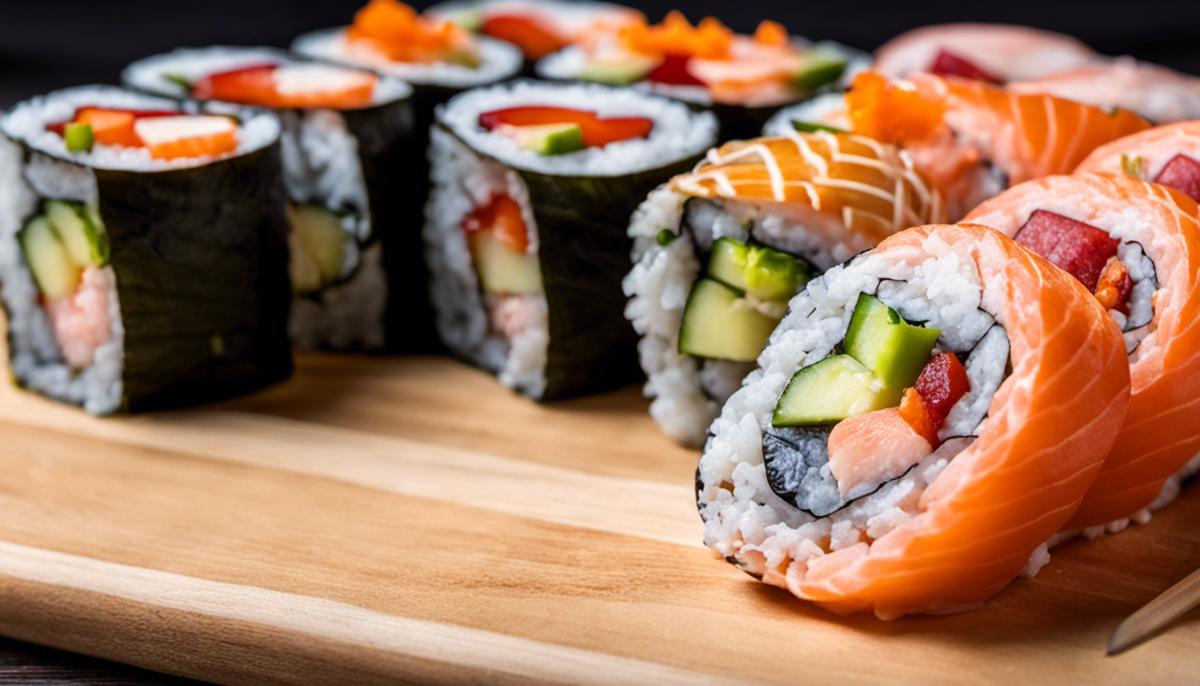
Sushi, more than just a meal. It’s a passion, a lifestyle, a source of nutrients, and a finely tuned form of culinary art. Due to the variety of fillings and toppings and the flexibility of absorbing different protein sources, sushi rolls will never let you down. No matter how specific your dietary needs or taste preferences are, there’s always room for experimentation and customization to create the perfect, protein-rich sushi. At the end of the day, enjoying sushi rolls is an experience that nourishes both the mind and the body. Whether you’re trying them for the first time or you’re a long-time lover, sushi rolls have the remarkable ability to leave you both full and in anticipation of the next bite.
